Top 250 Software Development Interview Questions and Answers
Updated 4 Jul 2025

Asked in Cognizant

Q. Explain implicit and explicit wait.
Implicit wait is a global wait applied to all elements, while explicit wait is a specific wait applied to a particular element or condition.
Implicit wait is set once and applied to all elements in the script
Explicit wait is set for a specific element...read more

Asked in JPMorgan Chase & Co.

Q. Where can transactions be used in microservices?
Transactional can be used in microservices to ensure data consistency and integrity.
Transactional mechanisms can be used to ensure that all microservices involved in a transaction either commit or rollback together.
Transactional boundaries can be def...read more
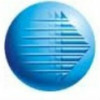
Asked in Protechsoft Technologies

Q. What is SDLC and its methodology? Explain briefly.
SDLC stands for Software Development Life Cycle. It is a process followed to develop software applications.
SDLC is a structured approach that consists of various phases such as requirements gathering, design, development, testing, deployment, and mai...read more

Asked in Virtusa Consulting Services

Q. How can you improve the test coverage of a class?
To improve test coverage of a class, write more test cases to cover all possible scenarios.
Identify uncovered lines of code using a code coverage tool
Write test cases for each uncovered line of code
Write test cases for boundary conditions and edge ca...read more

Asked in TCS

Q. What functions are used in this code?
The functions used in the code are calculateSum, displayResult, and validateInput.
calculateSum - calculates the sum of two numbers
displayResult - displays the result of the calculation
validateInput - checks the validity of user input

Asked in OpenText Technologies

Q. What is the difference between a factory and a service?
A factory is responsible for creating and managing objects, while a service is responsible for providing specific functionality or performing tasks.
A factory is used to create and initialize objects, often based on certain parameters or configuration...read more


Asked in Capgemini

Q. What could prevent a user from logging into the application?
Possible causes of user not able to login to an application
Incorrect username or password
Account locked or disabled
Expired password
Network connectivity issues
Application server down
Incorrect permissions or access rights
Firewall blocking access
Authent...read more

Asked in TCS

Q. How can we monitor the child pipeline in the master pipeline?
You can monitor the child pipeline in the master pipeline by using Azure Monitor or Azure Data Factory monitoring tools.
Use Azure Monitor to track the performance and health of the child pipeline within the master pipeline.
Leverage Azure Data Factory...read more

Asked in GlobalLogic

Q. What is Dependency Injection and how can we implement it?
Dependency Injection is a design pattern that allows objects to receive dependencies rather than creating them internally.
Dependency Injection is used to reduce tight coupling between software components.
It allows for easier testing and maintenance o...read more
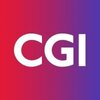
Asked in CGI Group

Q. Explain the framework used in your project.
The framework used in my project is a custom-built automation framework.
The framework is designed to support end-to-end testing of the application.
It follows a modular approach, allowing easy maintenance and scalability.
The framework supports various...read more
Software Development Jobs
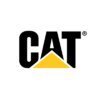



Asked in Navigators Software

Q. What are the ways of improving performance of an application?
Improving performance of an application can be achieved through various ways.
Optimizing code by reducing unnecessary calculations and improving algorithms
Caching data to reduce database queries and network requests
Lazy loading modules and components ...read more

Asked in Einfochips

Q. How do you log in to a Docker registry?
To login docker registry, use the docker login command with the registry URL, username, and password.
Use the docker login command followed by the registry URL
Enter the username and password when prompted
Example: docker login myregistry.com -u usernam...read more

Asked in Genpact

Q. How was version control implemented in your previous project?
We used Git for version control in our previous project.
We created a Git repository for the project.
All team members were added as collaborators to the repository.
We followed the Git flow branching model.
We used pull requests for code review and merg...read more

Asked in TCS

Q. Difference between Roles & Profiles, Difference between Workflow-ProcessBuilder-Flow,Types of Workflow and how to set them up,Trigger context variables
Explaining the difference between Roles & Profiles, Workflow-ProcessBuilder-Flow, types of Workflow, and Trigger context variables.
Roles define the level of access a user has to records in an organization, while profiles define the level of access a ...read more

Asked in IntouchCX

Q. If your app crashes on a phone, what will you do?
If an app crashes, I would troubleshoot, gather information, and implement fixes to enhance stability and user experience.
Check for error messages or logs to identify the cause of the crash.
Reproduce the crash by following the same steps to understan...read more

Asked in Babel Media

Q. How do you install a new build of a game on a device?
To install a new build of a game on a device, follow these steps:
Connect the device to the computer
Open the game's development software
Select the device as the target platform
Build the game
Install the game on the device
Test the game to ensure it work...read more

Asked in Nokia

Q. Explain the CI/CD process in Jenkins.
CI/CD process in Jenkins automates the building, testing, and deployment of software.
Developers commit code changes to a version control system.
Jenkins pulls the code and builds it in a clean environment.
Automated tests are run to ensure code quality...read more
Asked in Techyonic Softwares

Q. What are the differences between SDLC and STLC, and what are their phases?
SDLC is the process of developing software, while STLC is the process of testing software.
SDLC (Software Development Life Cycle) is the process of developing software from conception to delivery.
STLC (Software Testing Life Cycle) is the process of te...read more

Asked in Cvent

Q. How do you identify if an automation failure is due to an Apex error?
Check debug logs for Apex error messages
Review debug logs to identify any Apex error messages
Check the error message for the line number and class name
Use the Developer Console to view the debug logs
Consider implementing error handling and notificati...read more

Asked in Foxconn

Q. What are the seven basic tools of quality control in production?
The 7 tools in production are used for quality control and process improvement.
Check sheets
Control charts
Histograms
Pareto charts
Scatter diagrams
Flowcharts
Cause-and-effect diagrams

Asked in Appsquadz Software

Q. What do you mean by bug life cycle?
Bug life cycle refers to the stages a bug goes through from discovery to resolution.
Bug is discovered and reported
Bug is assigned to a developer
Developer reproduces the bug
Developer fixes the bug
Bug is retested and verified as fixed
Bug is closed

Asked in Wipro

Q. How do you create a widget in Unreal Engine?
Creating a widget in Unreal Engine
Widgets in Unreal Engine are created using the UMG (Unreal Motion Graphics) system
You can create a widget blueprint and design the UI using various components like buttons, text boxes, etc.
Widgets can be added to the...read more

Asked in SmartSoC Solutions

Q. How can Calibre be used to identify missing tie cell issues?
To catch a missing tie cell issue using calibre, run DRC check with appropriate rule deck.
Create a rule deck with tie cell rules
Run DRC check using the rule deck
Check the DRC report for any missing tie cell violations
Fix the violations and re-run DRC...read more
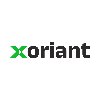
Asked in Xoriant

Q. Explain the Automation Framework used in your project.
Our automation framework is built using Selenium WebDriver and TestNG.
We use Page Object Model design pattern for better maintainability.
We have created custom libraries for common functions like login, logout, etc.
We use Jenkins for continuous integ...read more
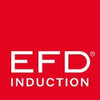
Asked in Induct Solutions

Q. How do you troubleshoot the package and application model?
To troubleshoot package and application model, follow these steps:
Check the deployment status of the package or application
Verify the content source location and ensure it is accessible
Check the logs for any errors or warnings
Verify the dependencies ...read more

Asked in Wipro

Q. In an Agile project, can you perform automation within a sprint?
Yes, if the automation is planned and executed within the sprint timeline.
Automation should be planned and estimated during sprint planning
Automation scripts should be developed and executed within the sprint timeline
Automation results should be revi...read more

Asked in TCS

Q. How have you implemented a CI/CD pipeline?
Our CI/CD pipeline is automated using Jenkins and AWS CodePipeline.
We use Jenkins to build and test our code.
We use AWS CodePipeline to deploy our code to different environments.
We have automated testing and quality checks in place to ensure code qua...read more

Asked in TechnipFMC

Q. Do you know about QAP/ITP?
Yes, QAP/ITP stands for Quality Assurance Plan/Inspection and Test Plan.
QAP/ITP is a document that outlines the quality assurance and inspection procedures for a project or product.
It includes details about the tests to be conducted, acceptance crite...read more

Asked in Tech Mahindra

Q. What is Maven and explain its structure?
Maven is a build automation tool used primarily for Java projects.
Maven uses a Project Object Model (POM) to manage dependencies and build process
It uses a central repository to download dependencies
Maven has a defined directory structure for project...read more

Asked in Airproducts

Q. How do you perform patching of a UC4 agent?
UC4 agent patching involves stopping the agent, applying the patch, and restarting the agent.
Stop the UC4 agent service
Apply the patch to the agent installation directory
Restart the UC4 agent service
Verify the agent is running and functioning properl...read more

Top Interview Questions for Related Skills
Interview Experiences of Popular Companies










Interview Questions of Software Development Related Designations



Reviews
Interviews
Salaries
Users










